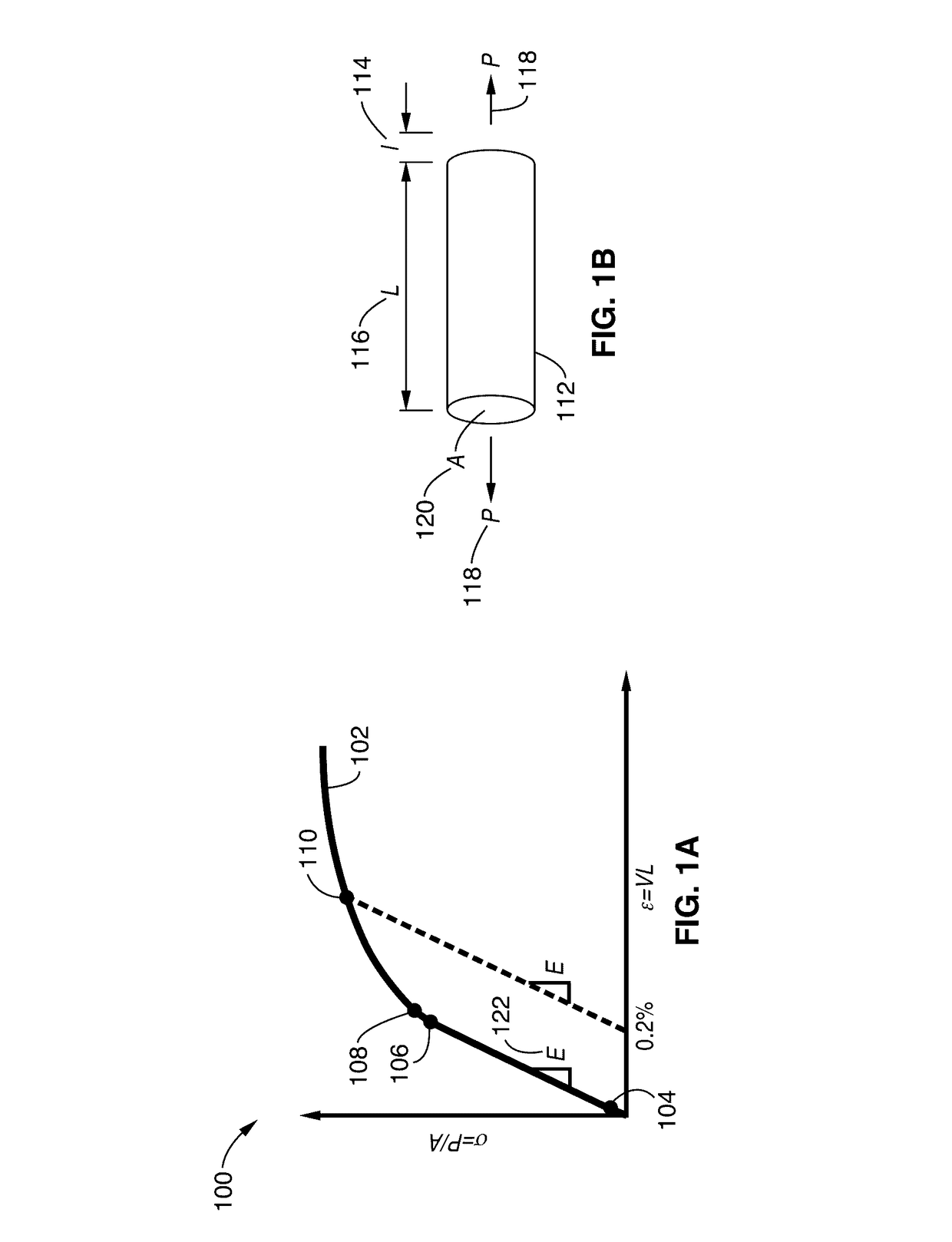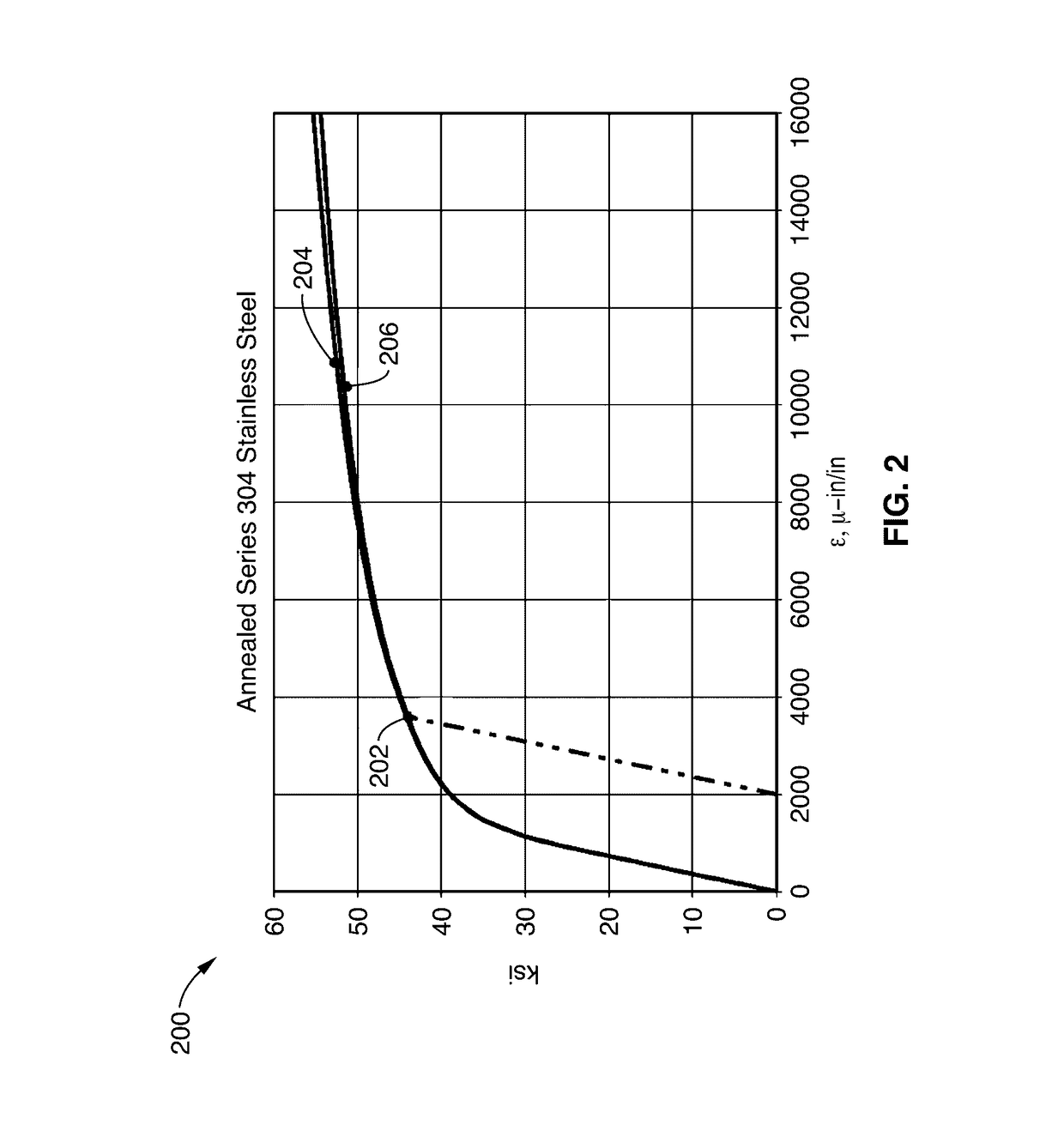Methods for increasing cycle life of metal liners and products manufactured therefrom
a technology of metal liners and cycle life, which is applied in the field of metal liners with improved cycle life, can solve the problems of metal fatigue, cracking, cracking of local high plastic strain areas, and failure of liners, and achieve the effect of increasing the yield strength of metal
- Summary
- Abstract
- Description
- Claims
- Application Information
AI Technical Summary
Benefits of technology
Problems solved by technology
Method used
Image
Examples
example 1
[0114]Finite element analysis (FEA) methods were used to verify the expected plastic strain reduction. The example used for evaluation showed a 50% reduction in plastic strain: e.g. from 2.0674% strain to 1.00% strain.
[0115]This metal lined pressure vessel was built and tested to prove the FEA results and increased cycle fatigue life.
example 2
[0116]The incremental autofrettage process is first modeled using finite element analysis methods to determine the correct pressures to use without buckling or damaging the metal liner. The yield zone in the metal liner is gradually increased with each higher pressure cycle. This can be evaluated with finite element analysis. FIG. 5B shows the gradually increasing yield zone with each incremental pressure cycle.
example 3
[0117]The maximum expected operating pressure (MEOP) of the pressure vessel used here is 6,000 psig. One set of incremental autofrettage pressure cycles would be:
(0-40%-0-60%-0-80%-0-100%-0-120%-0-150%-0)×(6,000 psig).
[0118]Refer now to FIG. 7A through FIG. 7C, which illustrate incremental autofrettage across a cross section of a thick walled composite tube. Here, in FIG. 7A is a cross section 700 of a thick walled composite tube where a thick walled inner liner 702 is made of a metal capable of work hardening surrounding an inner pressurized region 704. A composite outer section 706 surrounds and contacts the thick walled inner liner 702 at its outer radius ro 708. The interior radius ri 710 of the thick walled inner liner 702 surrounds the inner pressurized region 704.
[0119]FIG. 7B is an enlarged view of a section of the thick walled inner liner 702 of FIG. 7A.
[0120]FIG. 7C is a portion of a vertical cross section of the thick walled inner liner of FIG. 7B.
[0121]FIG. 7D is a hypot...
PUM
| Property | Measurement | Unit |
|---|---|---|
| pressures | aaaaa | aaaaa |
| pressures | aaaaa | aaaaa |
| pressures | aaaaa | aaaaa |
Abstract
Description
Claims
Application Information
 Login to View More
Login to View More - R&D
- Intellectual Property
- Life Sciences
- Materials
- Tech Scout
- Unparalleled Data Quality
- Higher Quality Content
- 60% Fewer Hallucinations
Browse by: Latest US Patents, China's latest patents, Technical Efficacy Thesaurus, Application Domain, Technology Topic, Popular Technical Reports.
© 2025 PatSnap. All rights reserved.Legal|Privacy policy|Modern Slavery Act Transparency Statement|Sitemap|About US| Contact US: help@patsnap.com



